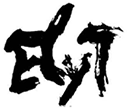LASMAT
LASMAT: Nd3+/Yb3+rare earth ions-doped transparent laser ceramics by Spark Plasma Sintering method. Comparison with single crystalsAxes:Materials & Structure DesignLeaders: Georges BOULON (iLM, UCBL) & Akira YOSHIKAWA (IMR, TU)Participants: Yannick GUYOT (ILM, UCBL), Shunsuke KUROSAWA (IMR, TU), Vladimir KOCHURIKHIN (IMR, TU)Polish and Italian sides: Malgorzata GUZIK (Department of Chemistry, Univ of Wroclaw, Poland), Guido TOCI (National Institute of Optics-CNR 50019 Sesto Fiorentino, Italy)Nd3+/Yb3+-doped Lu2O3single crystals show the highest thermal conductivity (12.5 W/m/K) and are very promising for high power laser applications. We are here at the frontier of materials science with a melting point of 2510°C so that successful growths of high crystal quality is a challenge. Indeed, it should be much easier to fabricate Lu2O3into a ceramic structure -solid-state reaction process- because the sintering temperature is about 700 °C lower than its melting point and no expensive crucible is required. We already have obtained both Nd3+/Yb3+-doped Lu2O3single crystals by the Micro-Puling Down (µ-PD) method and transparent ceramics by the non-conventional and fast Spark Plasma Sintering (SPS) method at IMR (Tohoku University). In 2018 we have mainly optimized the optical quality of these samples. We have tried to improve the homogeneity of nanometric sizes of raw materials with Dr Malgorzata Guzik at the University of Wroclaw (Poland) to fabricate ceramics. Prof. Yoshikawa at IMR wishes to improve the crystal quality of single crystals by creating the new technique of bulk crystal growth from the melt in the cold crucible especially for refractory crystals like Lu2O3. At last, we have checked spectroscopic properties at ILM of Lyon and laser outputs with Dr. Guido Toci at Firenze in Italy.

